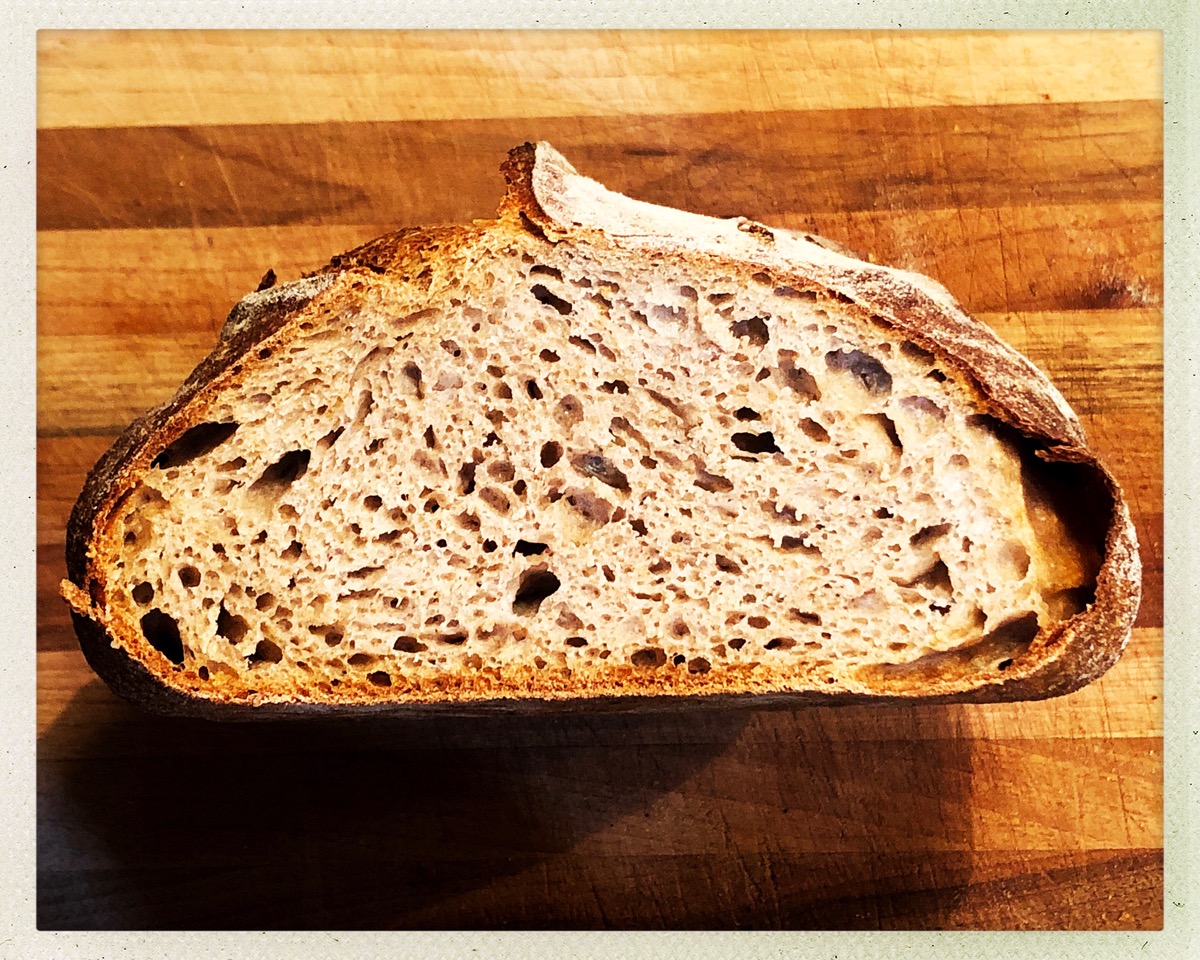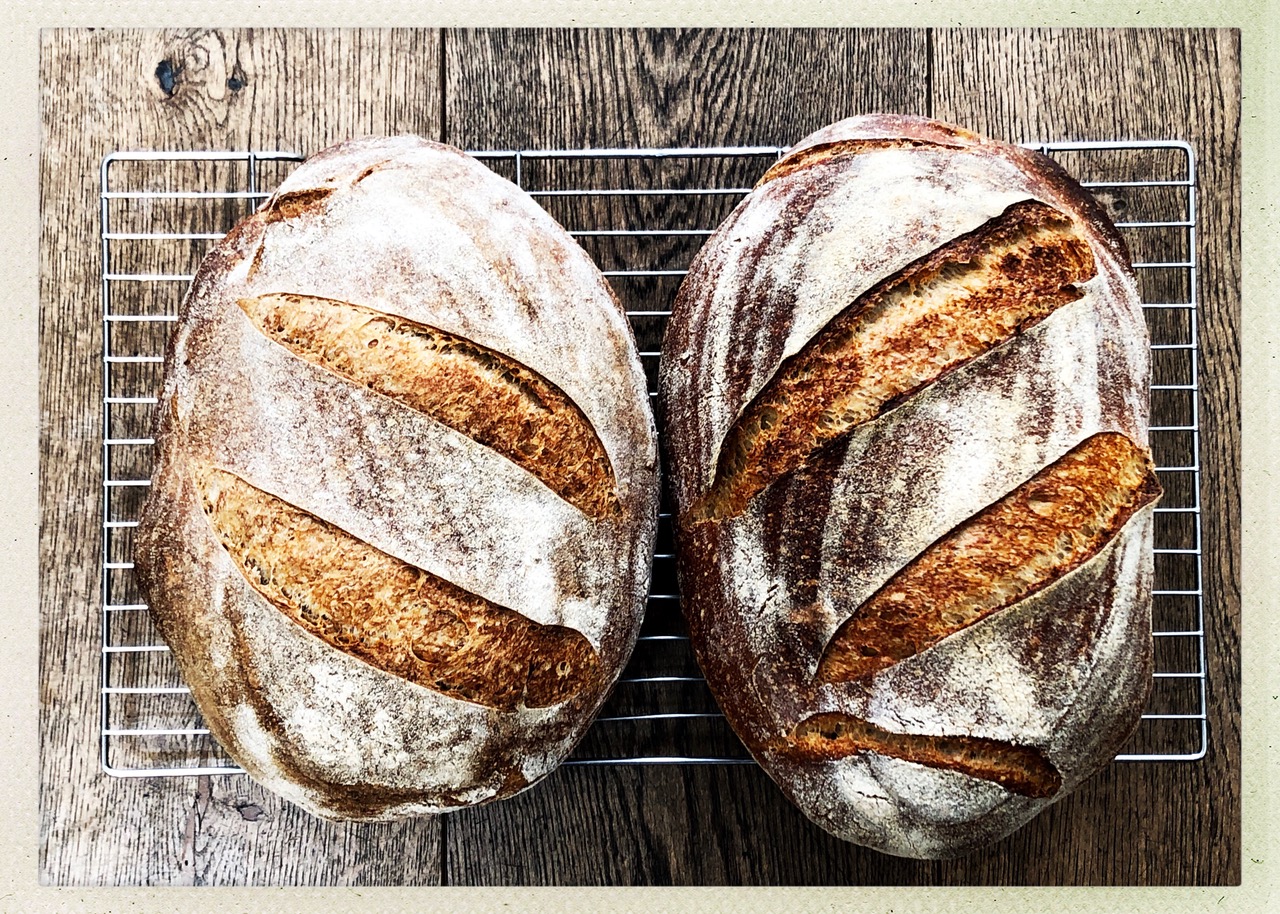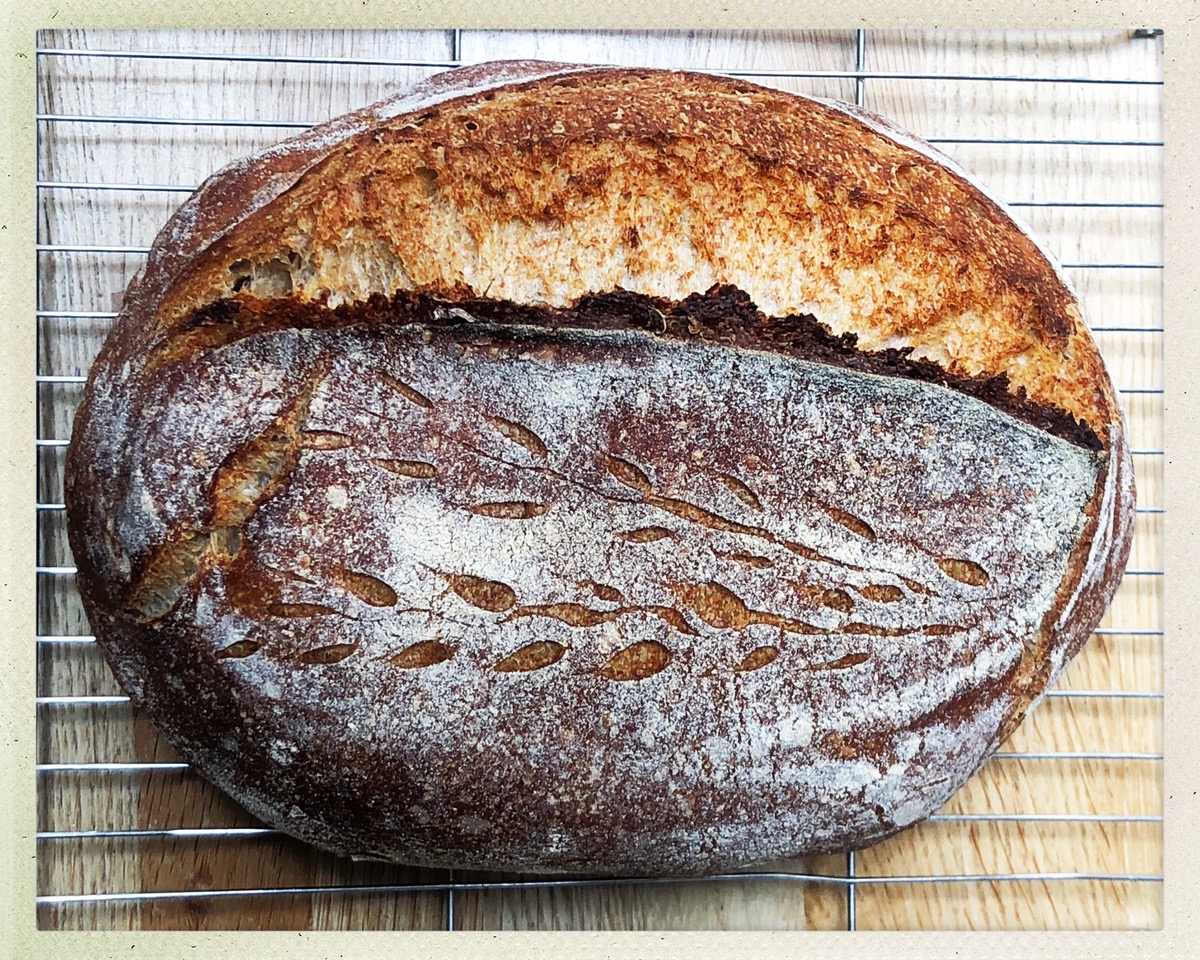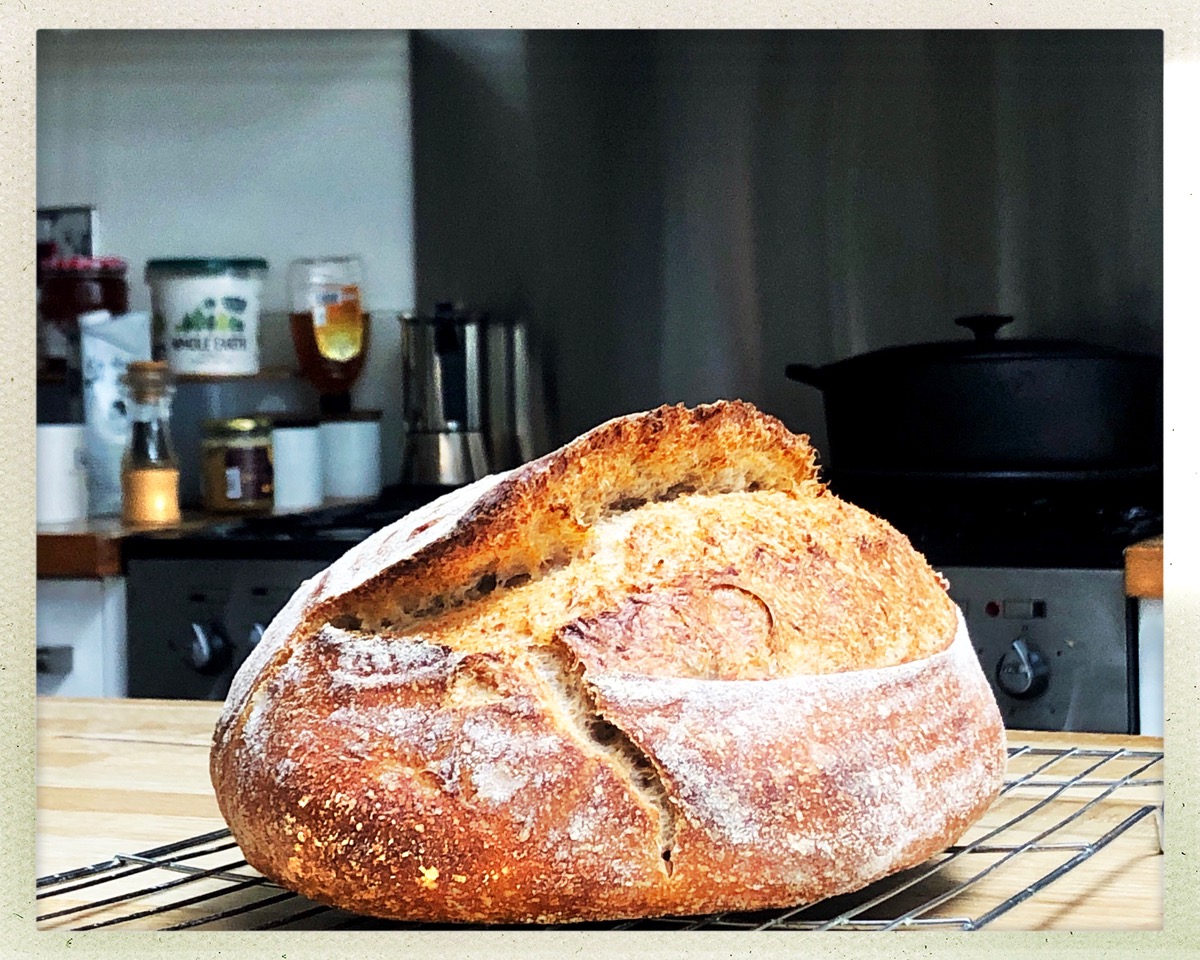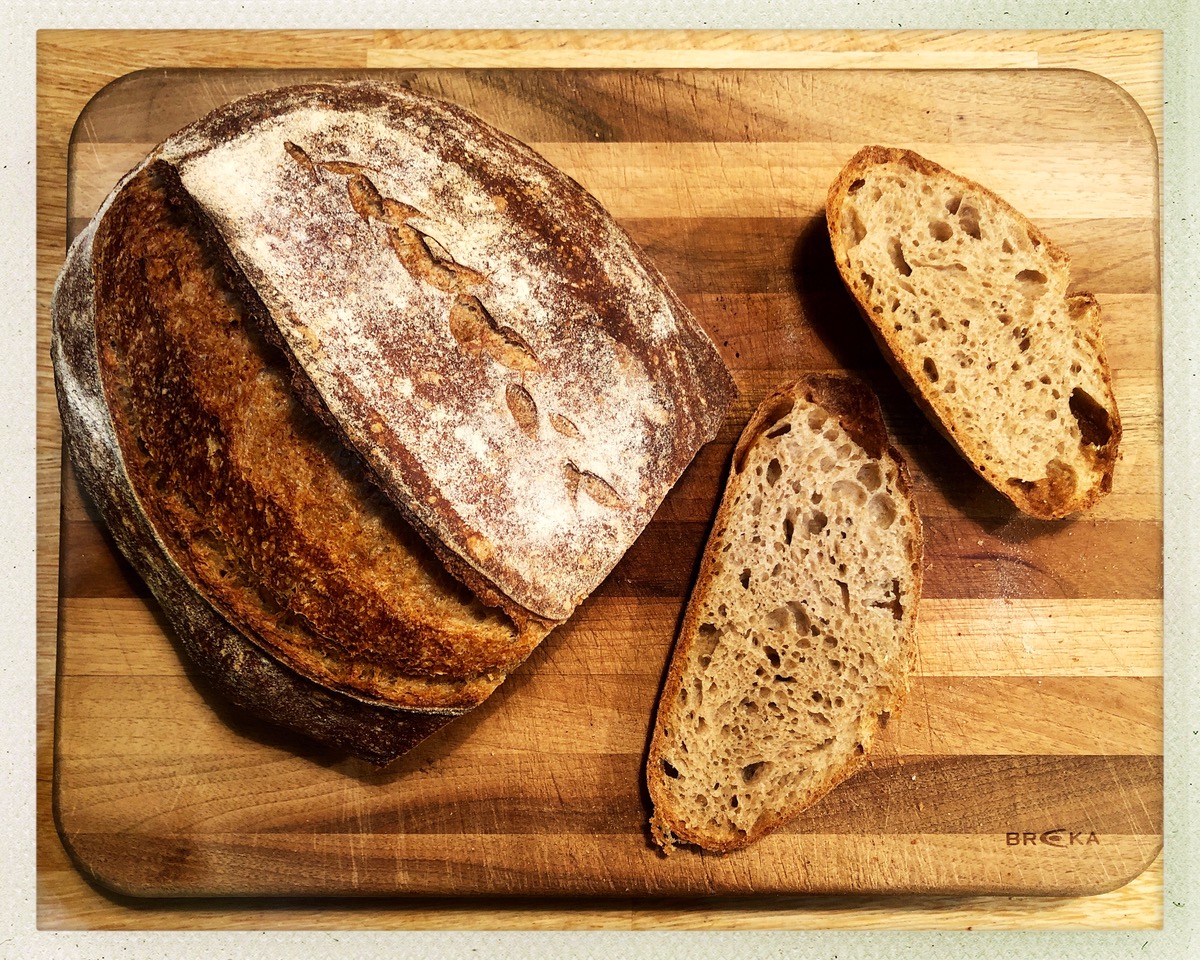Lockdown Recipe – Sourdough Bread
by Heathcliff O’Malley, Photographer
Sourdough Bread Recipe
I first started making sourdough bread in late 2018 . A bakery had moved into the area but the holes in the bread were so enormous that all the marmalade and butter were falling through my breakfast toast and it was really annoying me and I decided I could do better . I grew up with homemade wholemeal bread and think it’s so much better than much of what you can buy in England except for artisan bakeries .
After a lot of trial and error and some advice from friends I finally found a system that works for me .
I was fortunate that a good friend of mine has been making sourdough for the last decade and he gave me a recipe some starter that he’d originally sourced from a baker in Dorset , so who knows how old it is .
You can make your own too and there are bundles of recipes on the internet and various schools of thought about what consistency it should be , how it should be fed , some bakers even have names for their sourdough starter … hmm .
I normally feed my starter with 100g of flour and 100g of water the morning before I make up my dough . After “ feeding “ the starter should double in size and be full of bubbles . You can test if it’s ready by dropping a teaspoon of starter in a bowl of water , it should float .
I tend to mix my dough in the evenings , let it prove overnight in the fridge and then bake the next morning . The longer you prove , the fuller the flavor , especially if you include some rye in your dough mix .
I’d advise getting some Electric scales ( baking needs accuracy) , a large mixing bowl, a jug for luke warm water to wet hands etc and a dough scraper is invaluable . Cane Bannetons are great for proving bread in but a luxury , and you can simply line a large bowl with a tea towel .
here’s my recipe
add 150 of starter to a mixing bowl and mix with 330g of warm water and mix together roughly .
add 500g of Strong Bread Flour . For the first few times I would try maybe 400g white/100g brown . I now use 50/50 of each preferably stoneground and organic .
Mix well and then leave in bowl covered by plastic bag or a damp tea towel for 30 mins to autolyse ( absorb water ) . I now use a shower cap instead stretched over the bowl , it works great .
After 30 mins add 8-10g salt and mix well with wet hand working your fingers into the dough this will help develop the gluten . Only use one hand keeping the other clean of sticky dough !
Leave for another 30 mins…
Now stretch and fold the dough four times, turning the bowl 1 quarter each time 12 o’clock – 3 o’clock – 6 o’clock etc . Stretch and fold the dough over with one hand ( my right hand) and rotate the bowl with the other .
Leave for 30 mins between each round of folding .
Repeat 3 more times .
After 4 x stretch and folds leave for 30 mins and shape the dough and place covered in fridge overnight ( proving time) for 8 hrs either in a bread shaped tin or in a small bowl with a tea towel lining . (I place mine in a cane Banneton, dusted with brown rice flour, covered with a cloth and then plastic shower cap .)
The next day or after 2-3 hr room temperature proving time . The dough is ready when it slowly springs back after pushing with finger , if it doesn’t spring back it is over proved and may not rise in oven , if it springs back quicly it is under proved .
Heat oven to 240c or hot as you can .
It’s good practice to slash the top of the loaf before placing in the oven ( it’s called scoring) with a razor blade . This stops the loaf cracking as it expands in the oven.
Bake on metal baking sheet or pizza stone with tray of water underneath for maybe 40 mins or in a Le Creuset style pot for 20 mins at 240c with lid on and then 18 mins with lid removed at 220c until brown and ready . ( I use an old 30cm oval Le Creuset which fits a loaf from this recipe perfectly proved in a 10” inch oval Banneton .) Cast Iron pans with a lid trap in the moisture and I found I got the best results with this method over a baking stone and there’s no mucking about with trays of scolding water either !
Here’s a link that may help and there’s lots of Youtube videos on how to stretch and fold and about shaping the dough before proving . It takes some practice and confidence with the dough but is so worth it !
https://www.theperfectloaf.com/beginners-sourdough-bread/
The Tartine book is an excellent resource by Chad Robertson or The Sourdough School by Vanessa Kimbell .
Happy baking !
